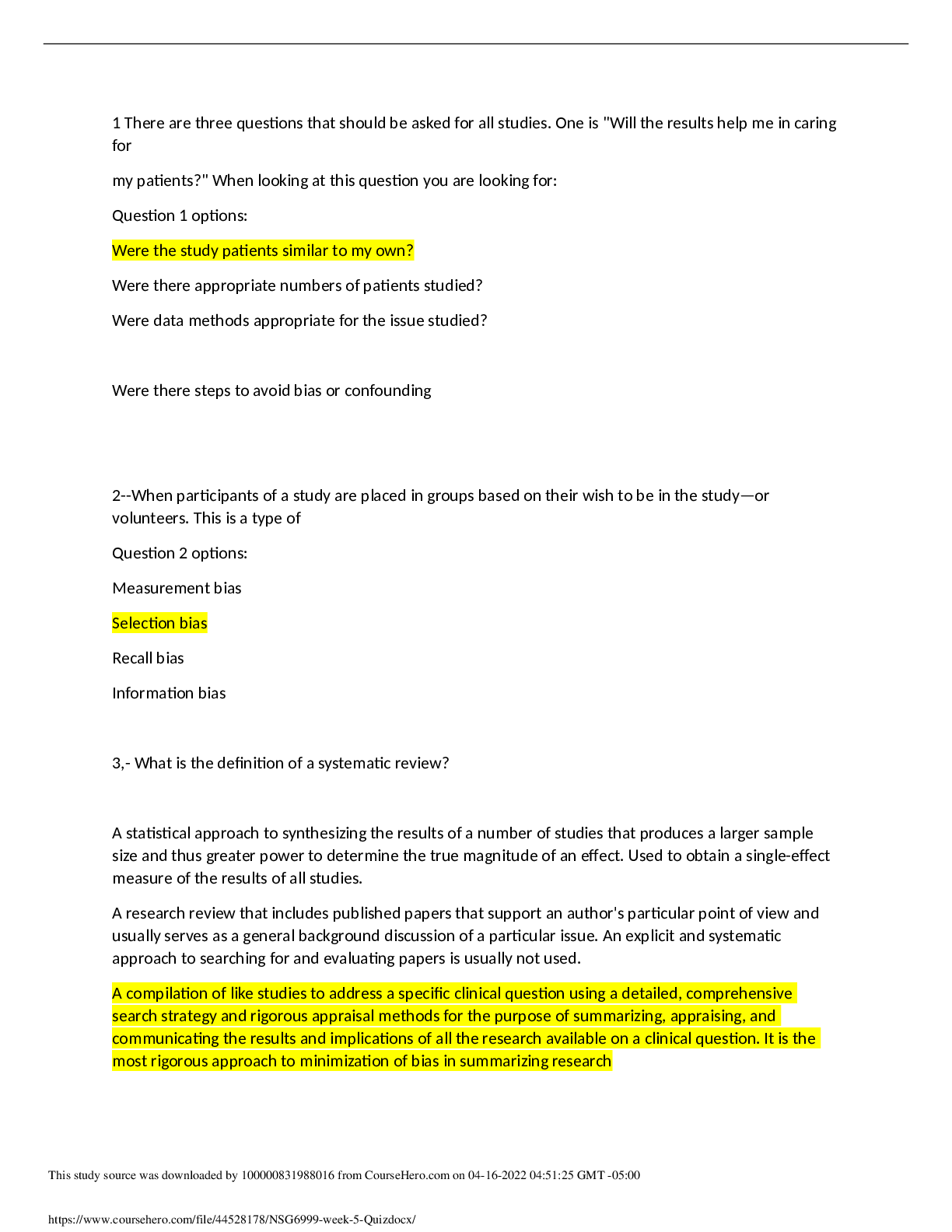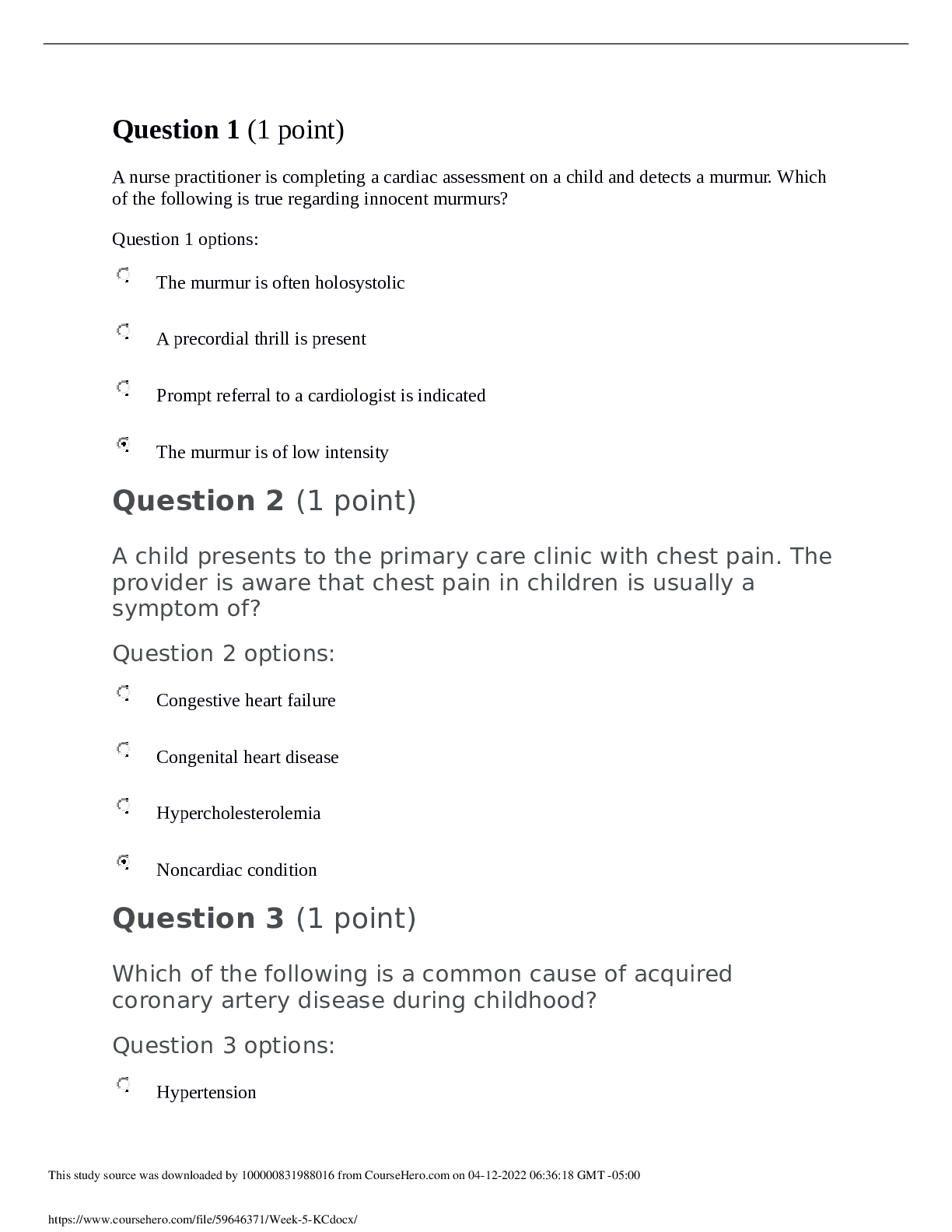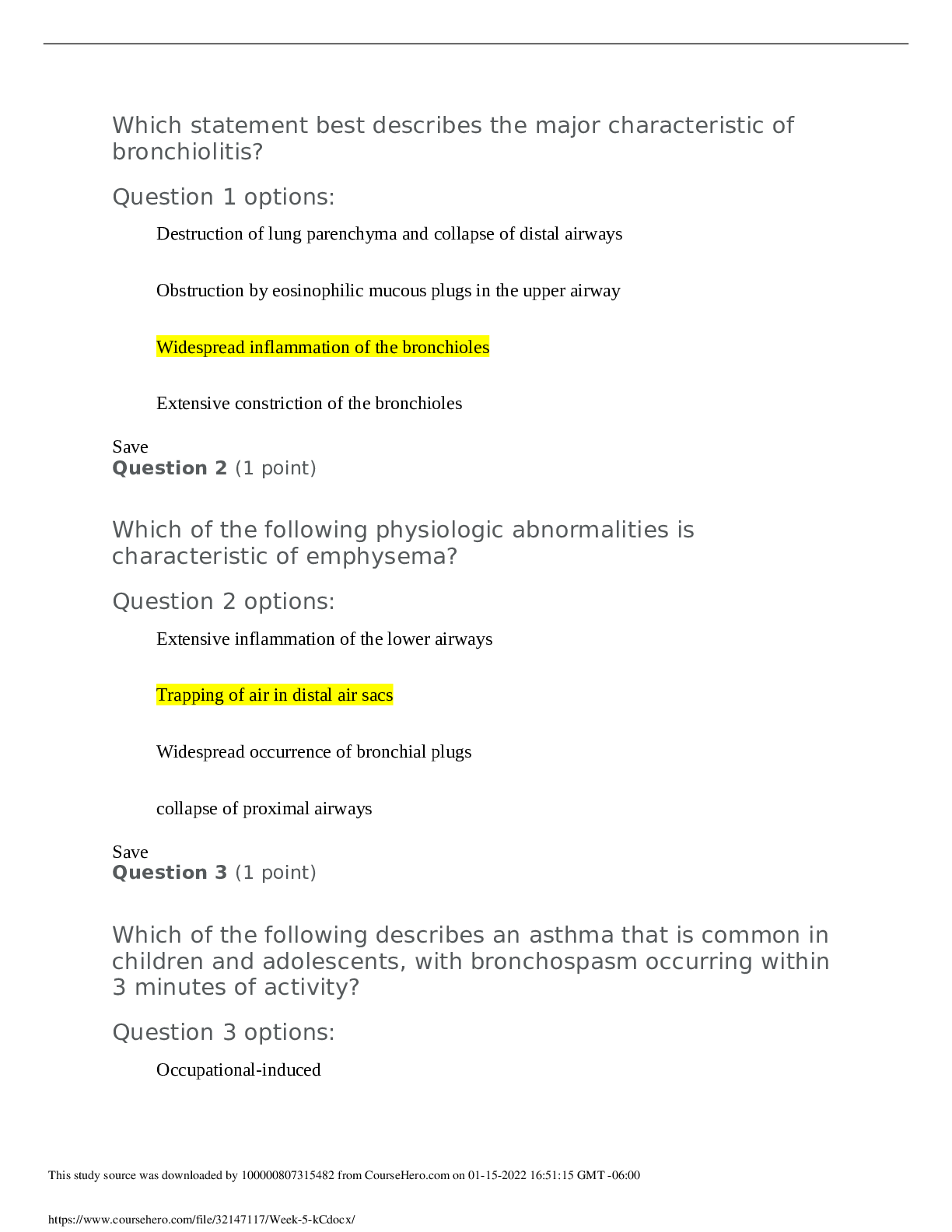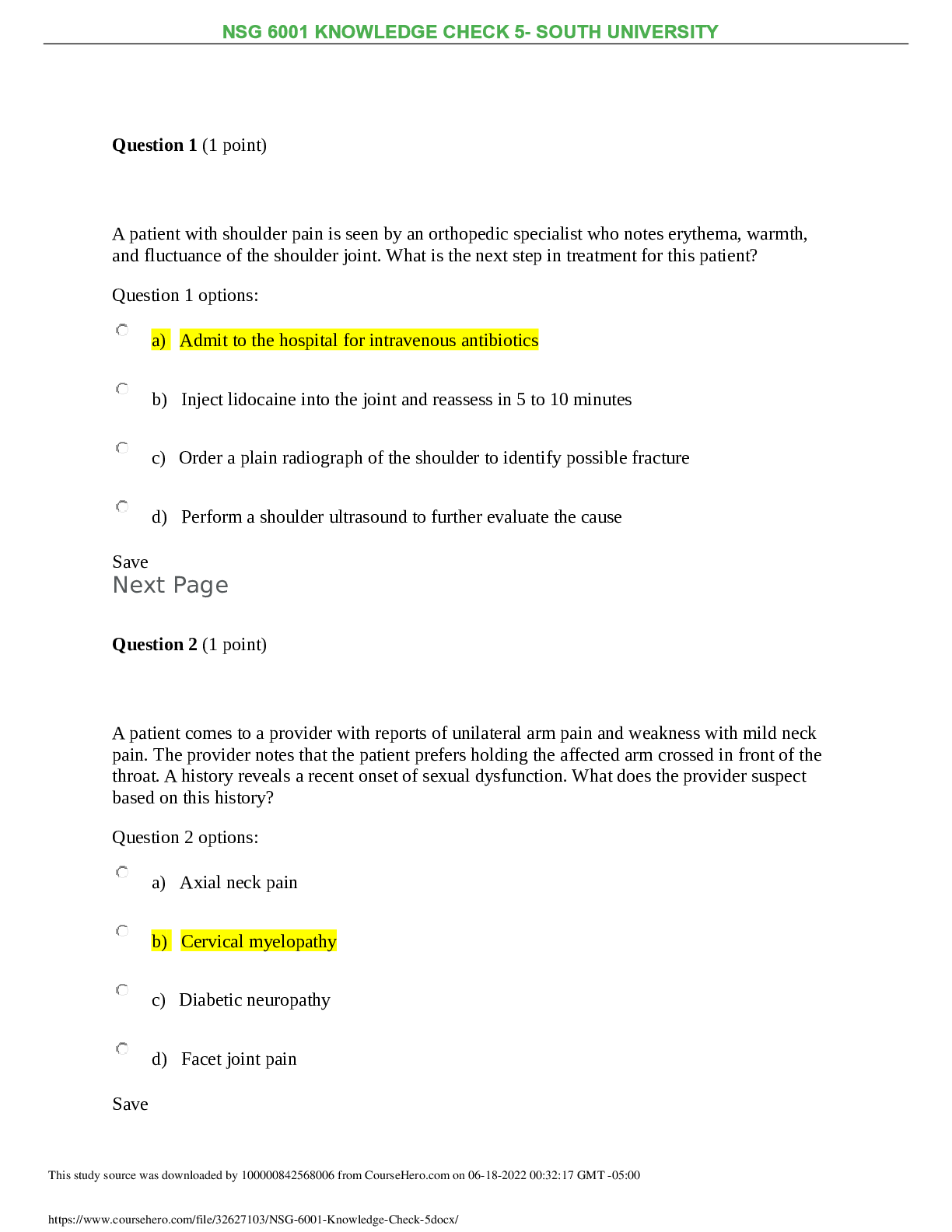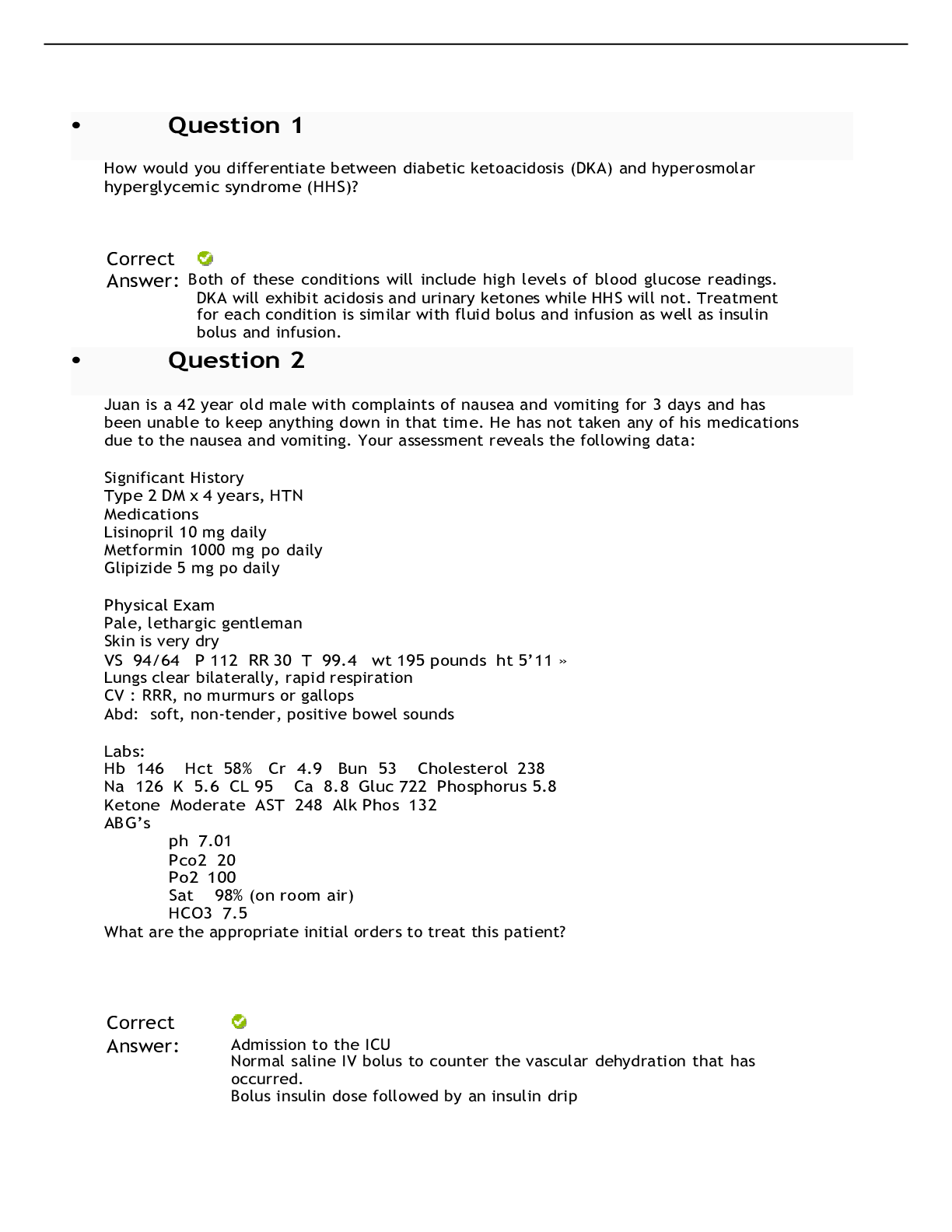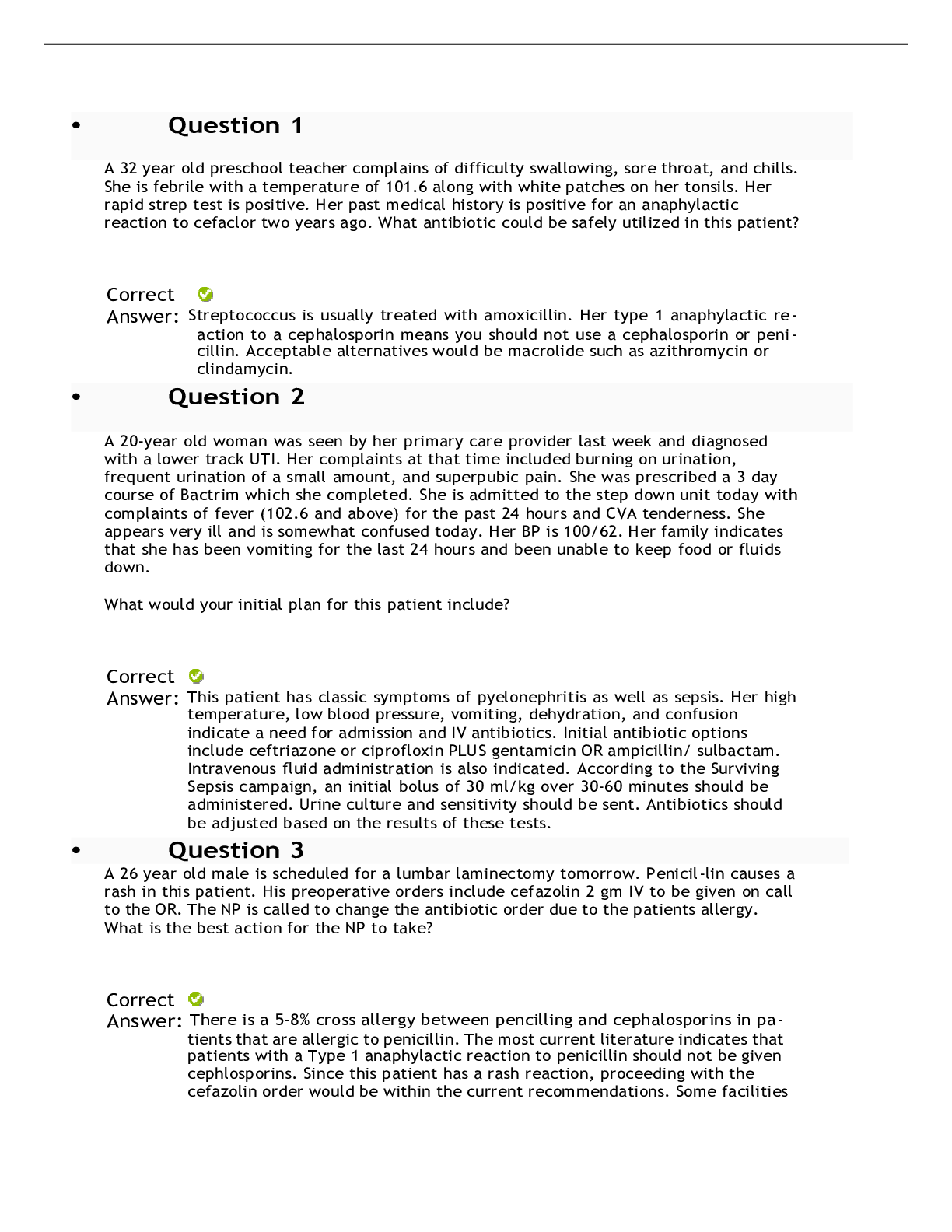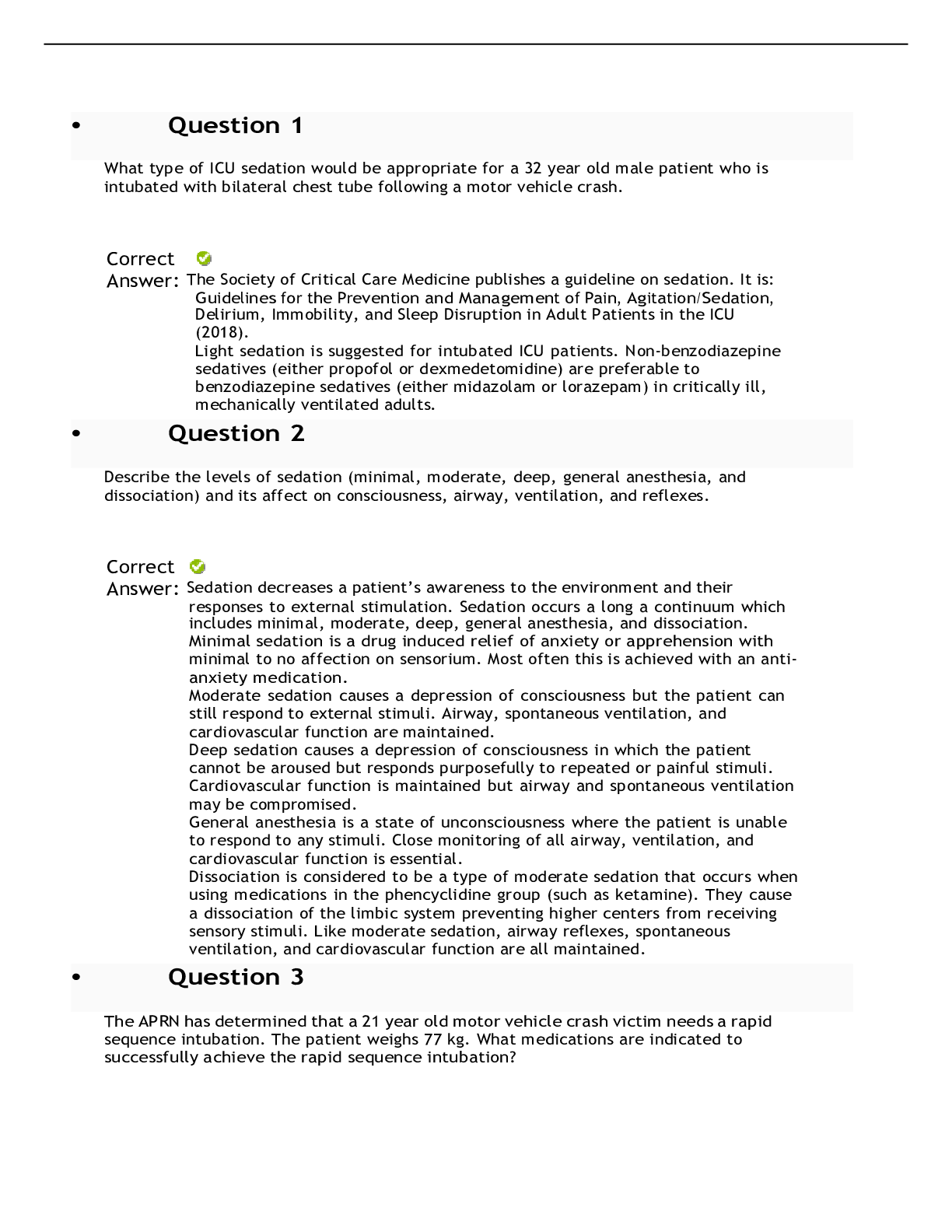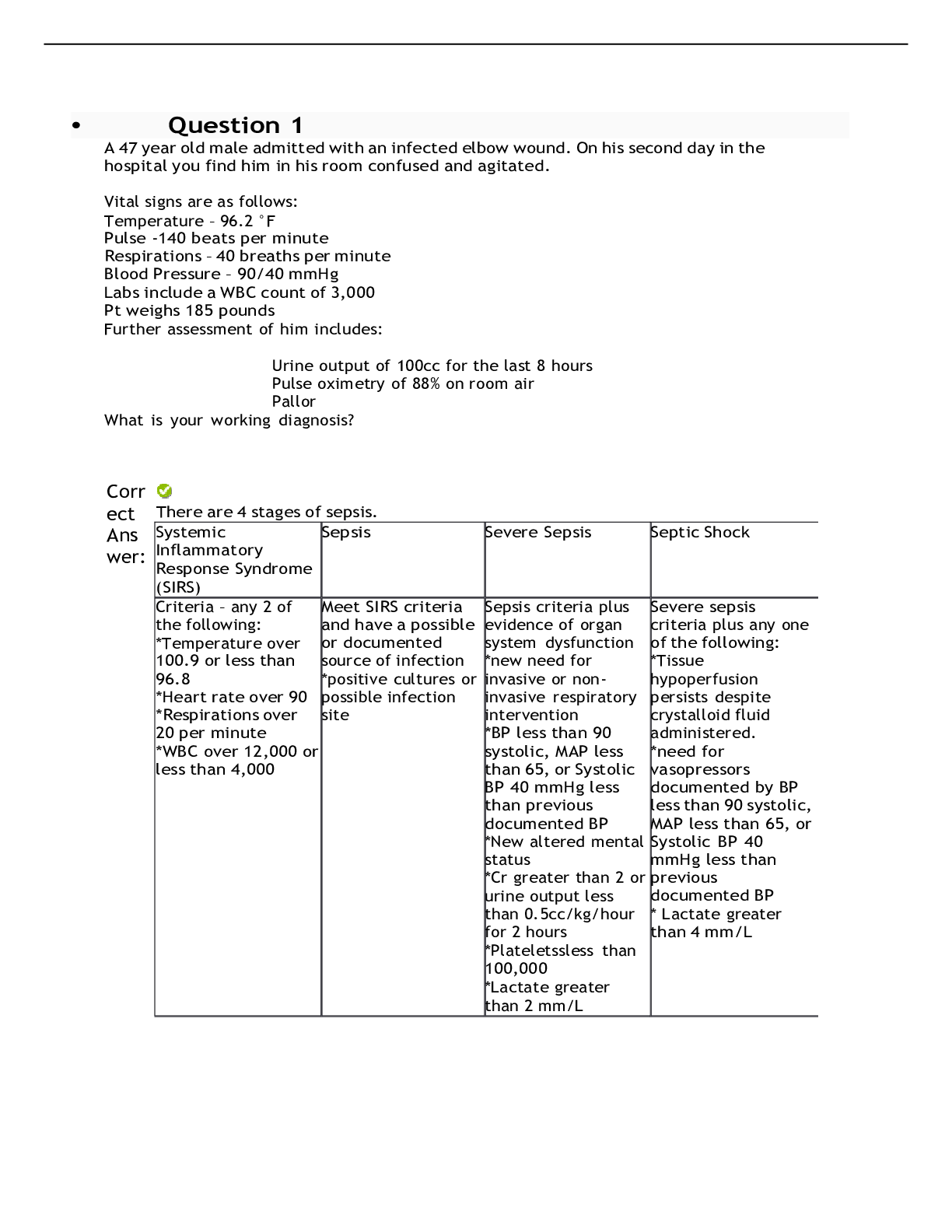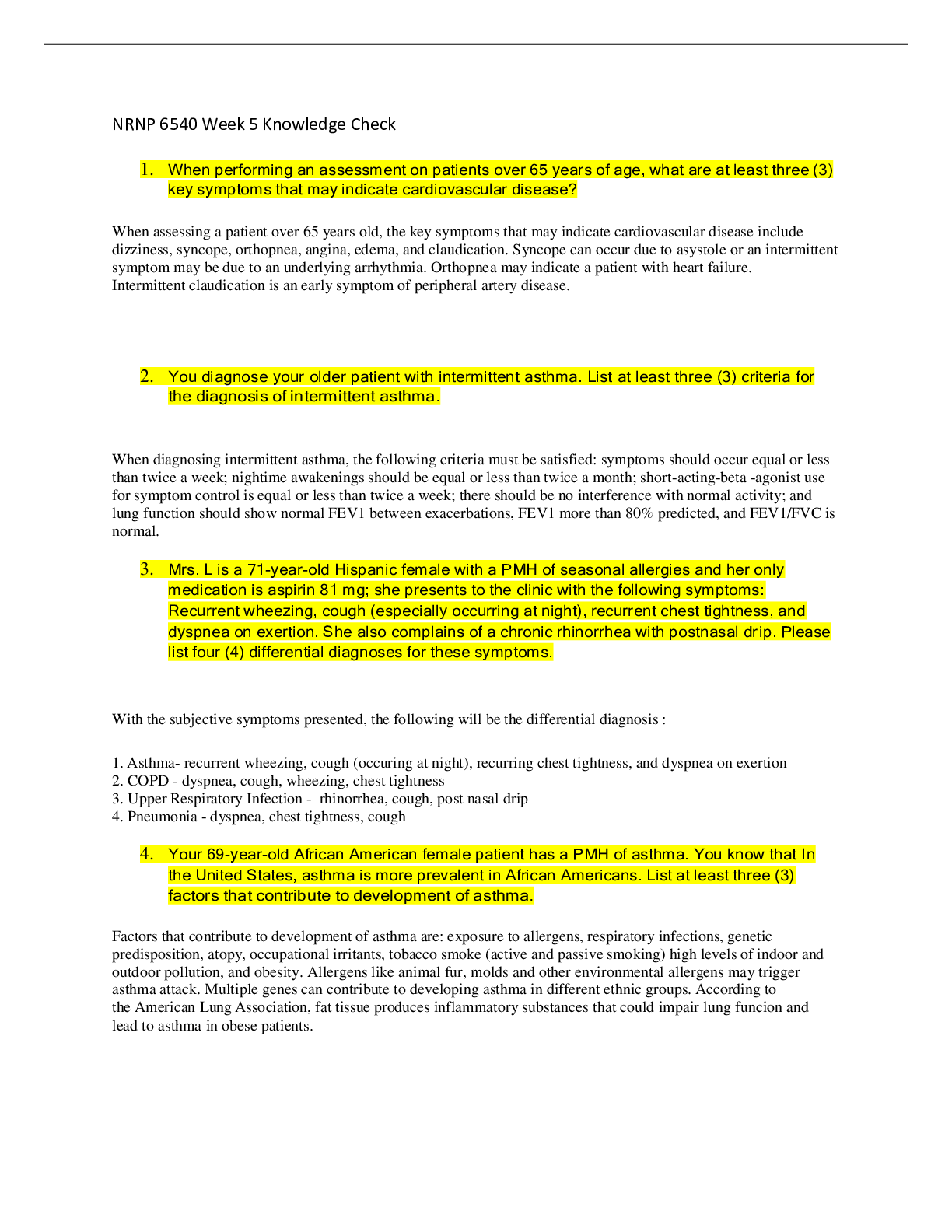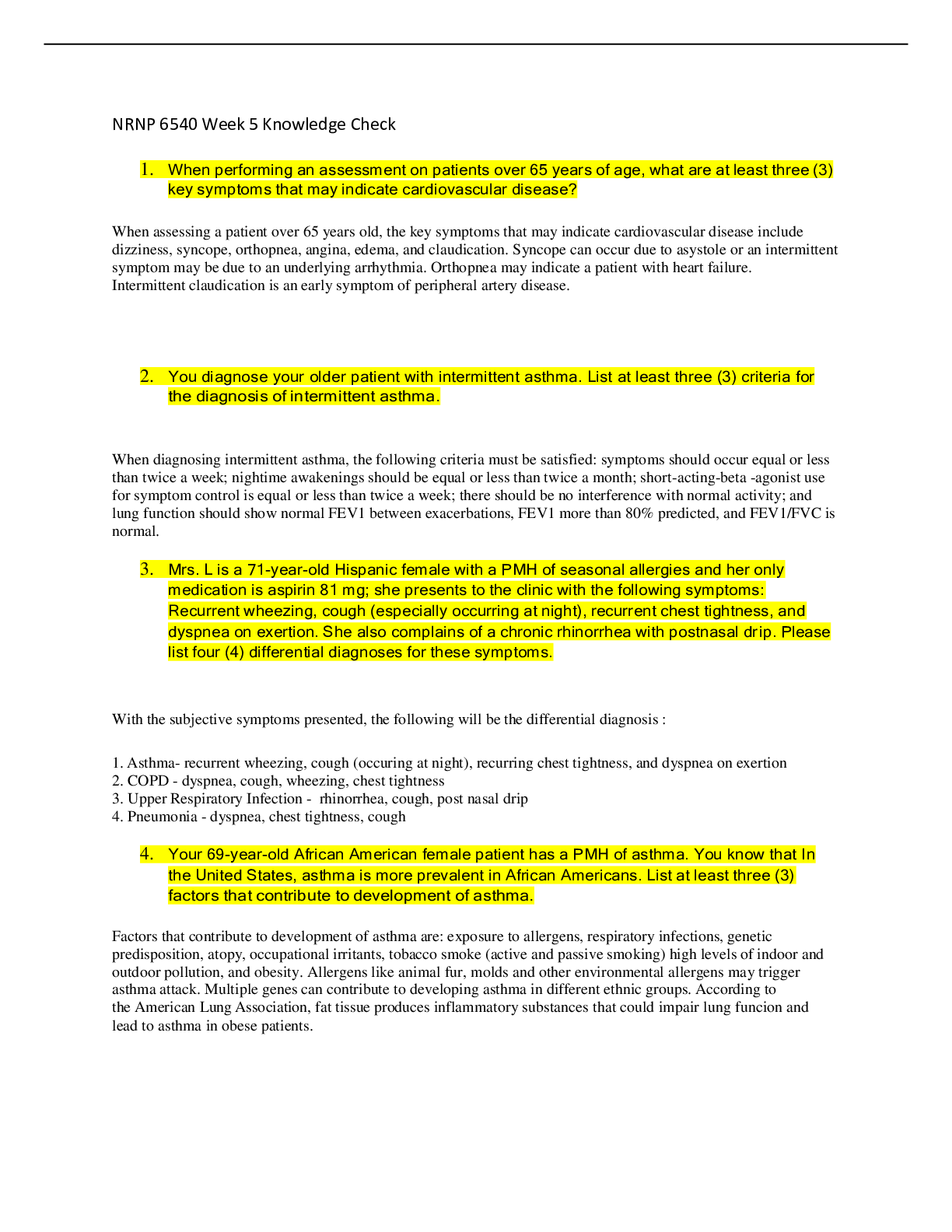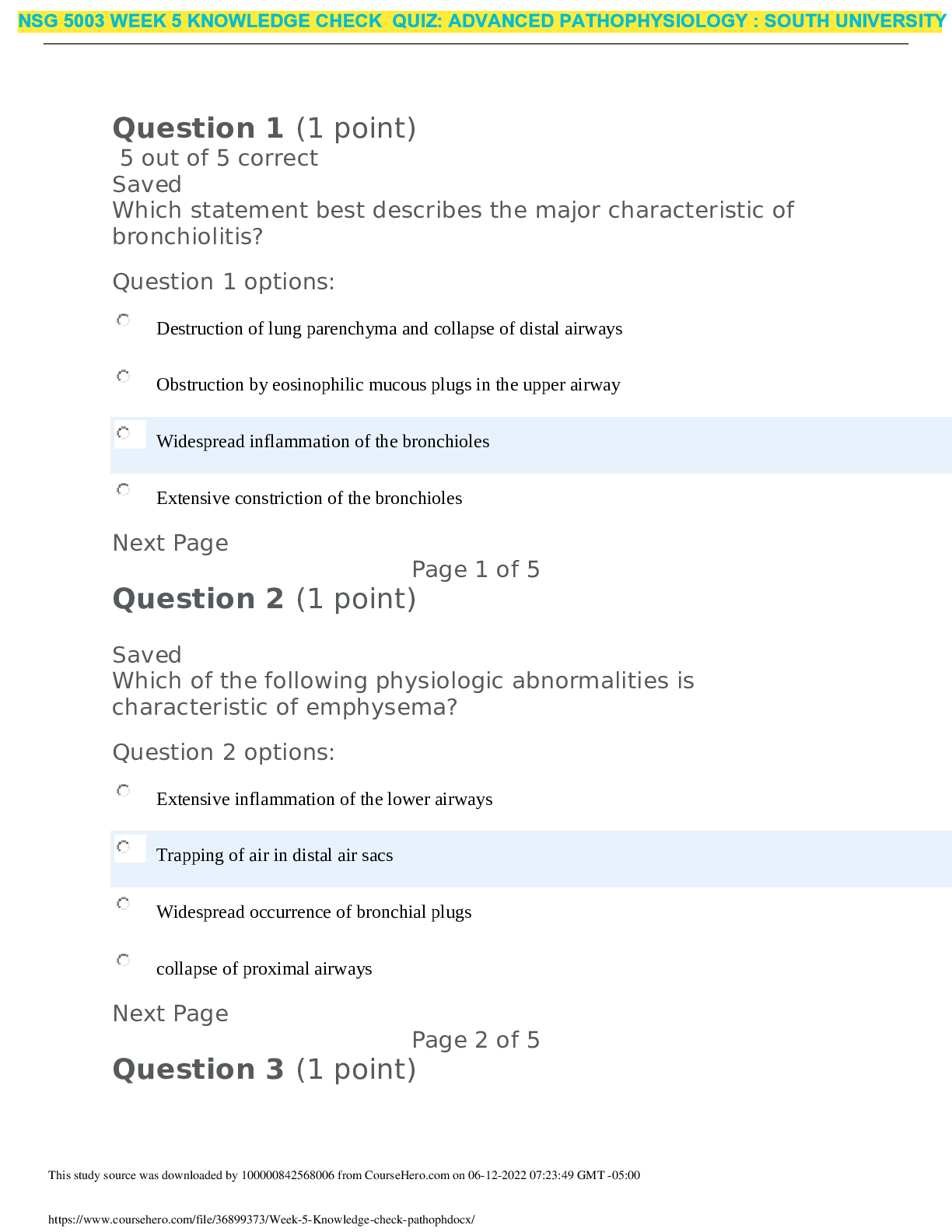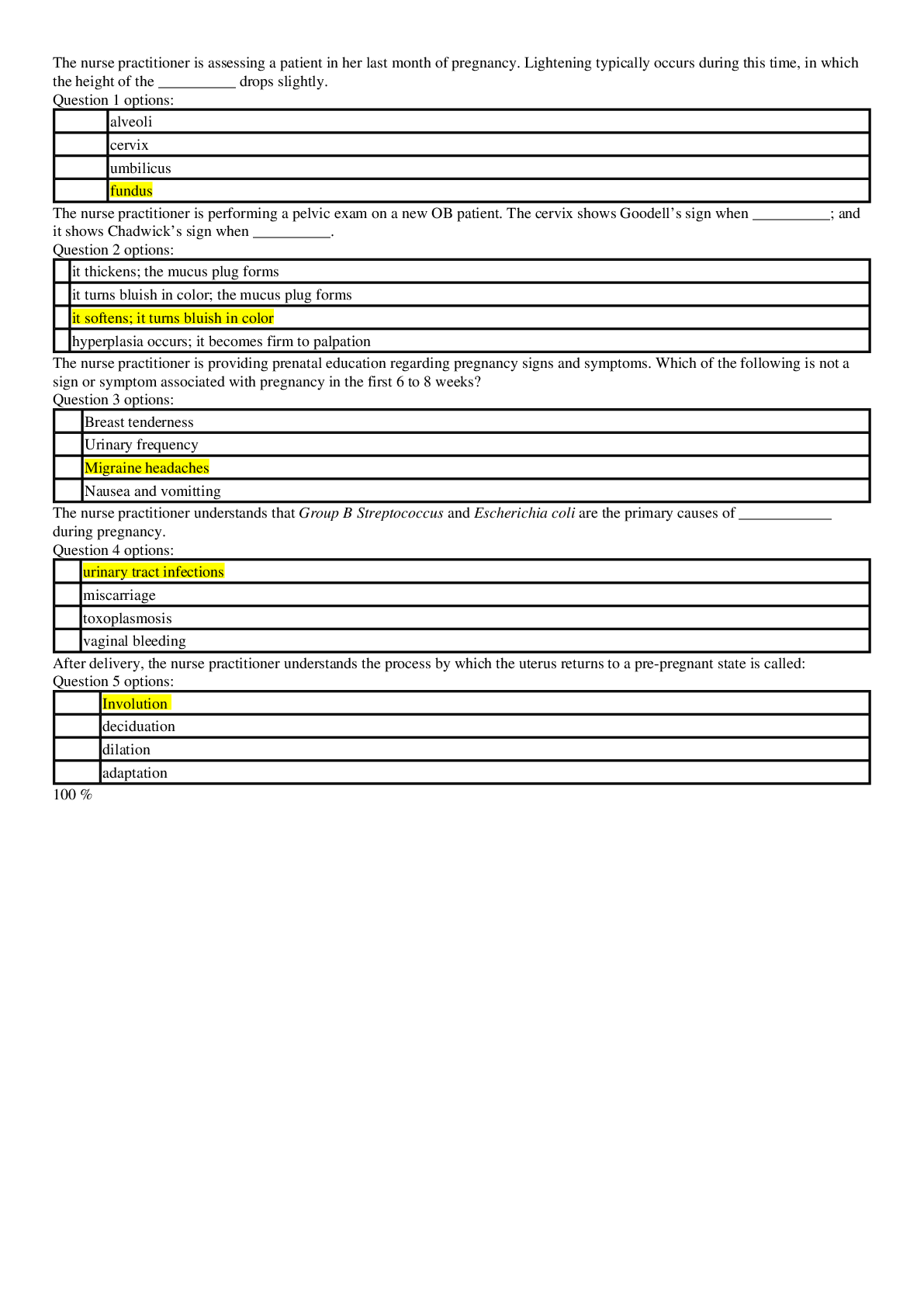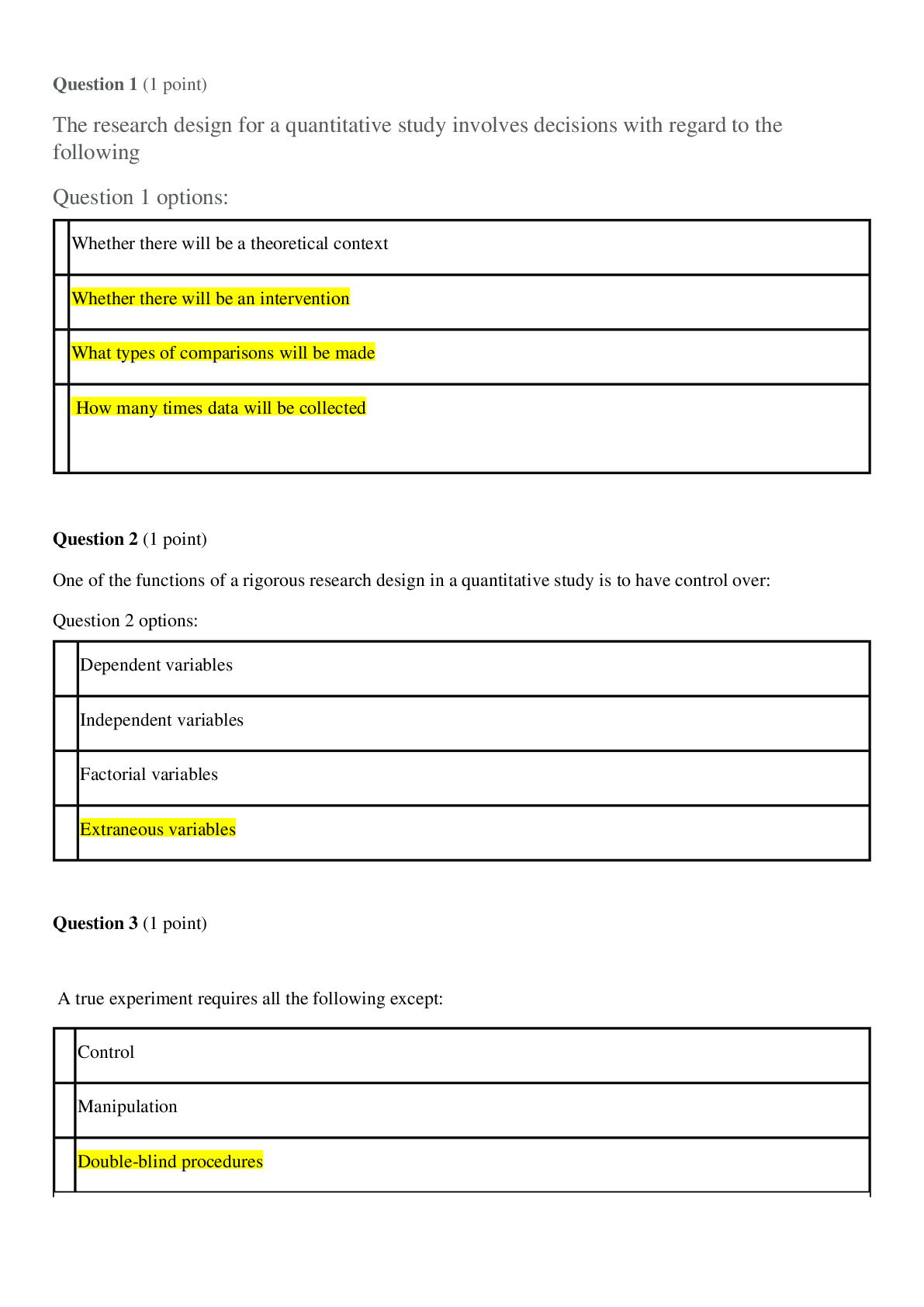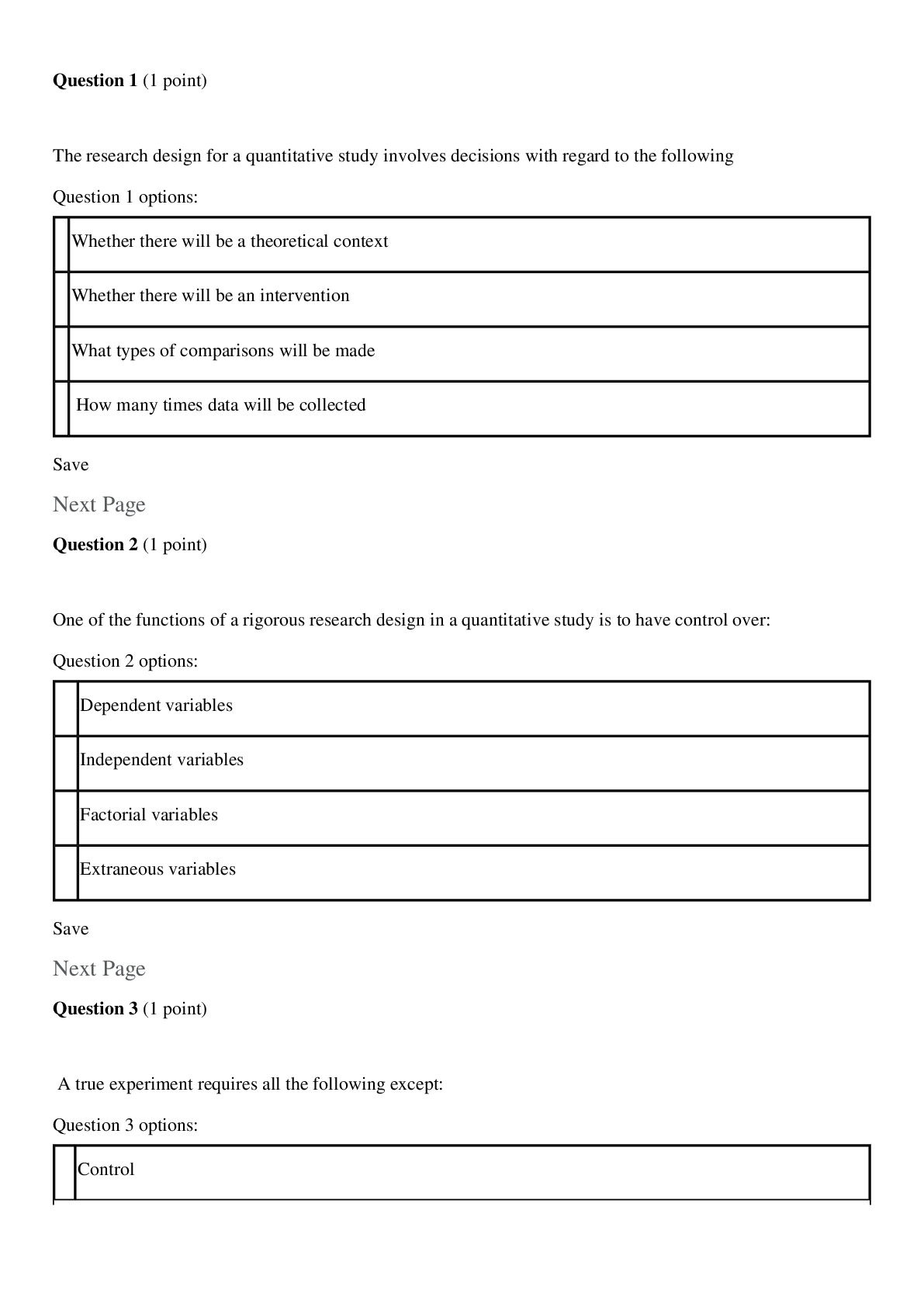*NURSING > QUESTIONS & ANSWERS > NRNP 6566 Week 5 Knowledge Check (100% Correct) Verified Answers (All)
NRNP 6566 Week 5 Knowledge Check (100% Correct) Verified Answers
Document Content and Description Below
Renee is a 56-year-old female that fell about a week ago and sprained her R ankle. She states she has been taking it easy and laying around her home for most of the last week so it would heal. Yesterd... ay she noticed that her calf was sorer than it had been, and her R foot and ankle were more swollen than they had been. She came to urgent care today because she was afraid that the injury was worse than she thought it was. T 99.2 BP 128/77 HR 88 RR 18 Wt 126 pounds Heart S1S2 regular rate and rhythm, Lungs clear, Abdomen soft R ankle is swollen but not discolored. 1-2+ edema noted Dorsiflexion causes some discomfort in the ankle and calf area. Pedal pulses equal bilaterally The APRN orders a duplex ultrasound of the right leg. Radiology reports that the ultrasound is positive for a deep vein thrombosis. How would you manage this patient (include labs and meds)? Correct Answer: It is appropriate to treat her on an outpatient basis with appropriate education and support. Obtain baseline PT/INR, PTT, CBC labs Begin Xarelto 15 mg po bid Patient education on medication and potential complications – return to emergency department for new onset shortness of breath A 26-year-old female is currently on Lovenox 80 mg subq daily. What labs should the APRN order to monitor this patient? Correct Answer: Enoxaparin (Lovenox) is a form of heparin but its action does not affect any of the clotting studies (PTT or PT/INR) so there is no value in monitoring them. Low molecular weight heparin and fractionated heparin can cause heparin induced thrombocytopenia (HIT), Monitoring for enoxaparin (Lovenox) would include platelet counts to assess for HIT which can occur as soon as 3 days after the medication is initiated. A 64-year man is recovering from a transurethral resection of the prostate for treatment of benign prostate hyperplasia. The patient is receiving intravenous antibiotics for the urinary tract infection. The post-operative course has been smooth and the APRN is removing the 3-way Foley catheter when there is a sudden release of bright red blood with many blood clots in the Foley bag. The patient becomes hypotensive, tachycardic and the APRN notes new ecchymoses on the patient’s arms and legs. The patient was immediately transferred to the surgical intensive care unit (SICU) and a stat hematology consult was conducted. Stat CBC, d-dimer, peripheral blood smear, partial thromboplastin time, Prothrombin time/international normalization ratio (INR), and fibrinogen labs were drawn. Results were: CBC with markedly decreased platelet count, peripheral blood smear showed decreased number of platelets and presence of large platelets and fragmented red cells (schistocytes), prothrombin time prolonged as was the partial thromboplastin time. The d-dimer was markedly elevated, and fibrinogen level was low. Based on the clinical presentation and laboratory data provided, what is your working diagnosis? Correct Answer: Disseminated intravascular coagulation (DIC) is the most likely diagnosis. DIC can result from numerous clinical conditions, including sepsis, trauma, obstetric, emergencies, and malignancy. The presence of schistocytes (fragmented red blood cells) on the peripheral blood smear suggests red blood cell injury from damaged endothelium. Decreased platelet count and low fibrinogen would distinguish DIC from thrombotic thrombocytopenic purpura and hemolytic anemia. A 66-year-old man is taking warfarin due to his atrial fibrillation. He noted that his gums were bleeding yesterday while eating. Today he had a coughing spell and has been spitting up bright red blood ever since. The APRN is called by the ER with the result of the INR ordered. The INR is 9.8. What is the appropriate treatment of this patient? Correct Answer: The 2019 Chest guideline offers some specific guidance in the management of VKA (vitamin K antagonist). If the INR is 4.5 -10 with no evidence of bleeding, the recommendation is to hold the medication but NOT administer any vitamin k or other reversal agents. If there is bleeding (as in this patient), the guideline recommends rapid reversal with four factor prothrombin complex (PCC) rather than with plasma. In addition, 5-10 mg of vitamin K by slow IV injection in addition to the PCC. A 64-year-old man diagnosed with a pulmonary embolism is currently on warfarin. His INR readings have been very inconsistent, and the decision is made to change his medication to Rivaroxaban (Xarelto). What dose should be initiated and how would you discontinue the warfarin? Correct Answer: Warfarin should be discontinued. Once the INR reaches 2.0 or below, Xarelto 15 mg bid x 3 weeks would be initiated. After 3 weeks, the dose is changed to 20 mg daily. A 66-year-old man was evaluated for shortness of breath for the last three months. Diagnostic work up confirmed a pulmonary embolism. He is alert and oriented. Vital signs are stable. He is ambulatory. He has a stable home environment and good support from his wife. He is on day 2 of treatment with Lovenox 90 mg every 12 hours. The patient wants to go home. Would you discharge him? How would you manage his medications? Correct Answer: The 2019 Chest guideline supports outpatient treatment for stable, reliable patients with stable home environments. The patient should continue the Lovenox for a minimum of 5 days. He will need a minimum of 3 months treatment with an oral agent. If warfarin is selected, the patient should start on it now with the hope that his INR is therapeutic by day 5. NOTE- he should not stop the Lovenox until his INR is in the therapeutic range. If a direct thrombin inhibitor or factor Xa inhibitor is selected, he should start on day 5 taking the first dose 2 hours before the Lovenox dose is due. A 26-year-old male was injured in a motorcycle crash 3 days ago. He sustained an acute subdural hematoma, acetabular fracture, and L2 fracture with spinal cord injury and resulting paralysis. He has a warm swollen right lower leg. Duplex ultrasound of the right lower leg is positive. What is the best treatment for this patient? Correct Answer: This patient is high risk for development of deep vein thrombosis and potential pulmonary embolism. The acetabular fracture is a further complicating injury. An inferior vena cava filter would be indicated in this patient to prevent a pulmonary embolism. According to the 2019 Chest guidelines, IVC filters are not first line treatment but this patient is very high risk for VTE, and the subdural hematoma would probably make anticoagulants contraindicated. A 45-year-old male is evaluated for complaints of severe low back and left leg pain. His MRI shows a herniated disk at L4L5. He has been recommended for a lumbar laminectomy surgery to treat the herniated disk. The patient had a cardiac stent placed 3 weeks ago and is currently on Plavix post procedure. When will the patient be able to have the lumbar surgery? Correct Answer: The 2019 Chest guideline suggest delaying elective surgery for 6 weeks after placement of a bare metal stent and at least 6 months after placement of a drug-eluting stent. The timing of surgery would depend on the type of stent placed. Elective surgery is typically delayed until after this time period. If emergency surgery is indicated, antiplatelet medications should be continued to as close to surgery as possible instead of discontinuing 7-10 days before surgery. [Show More]
Last updated: 1 year ago
Preview 1 out of 4 pages
Instant download
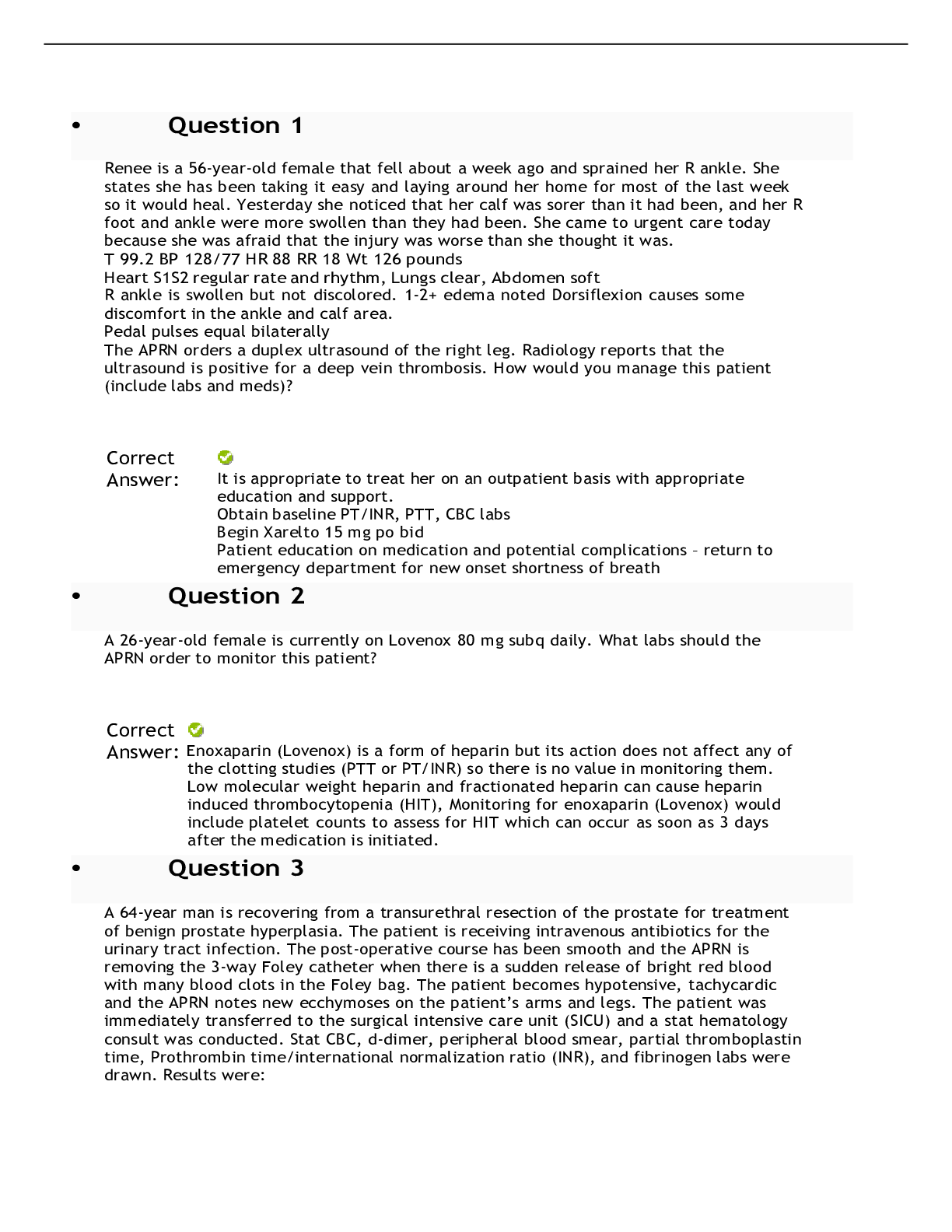
Instant download
Reviews( 0 )
Document information
Connected school, study & course
About the document
Uploaded On
Nov 18, 2021
Number of pages
4
Written in
Additional information
This document has been written for:
Uploaded
Nov 18, 2021
Downloads
0
Views
109
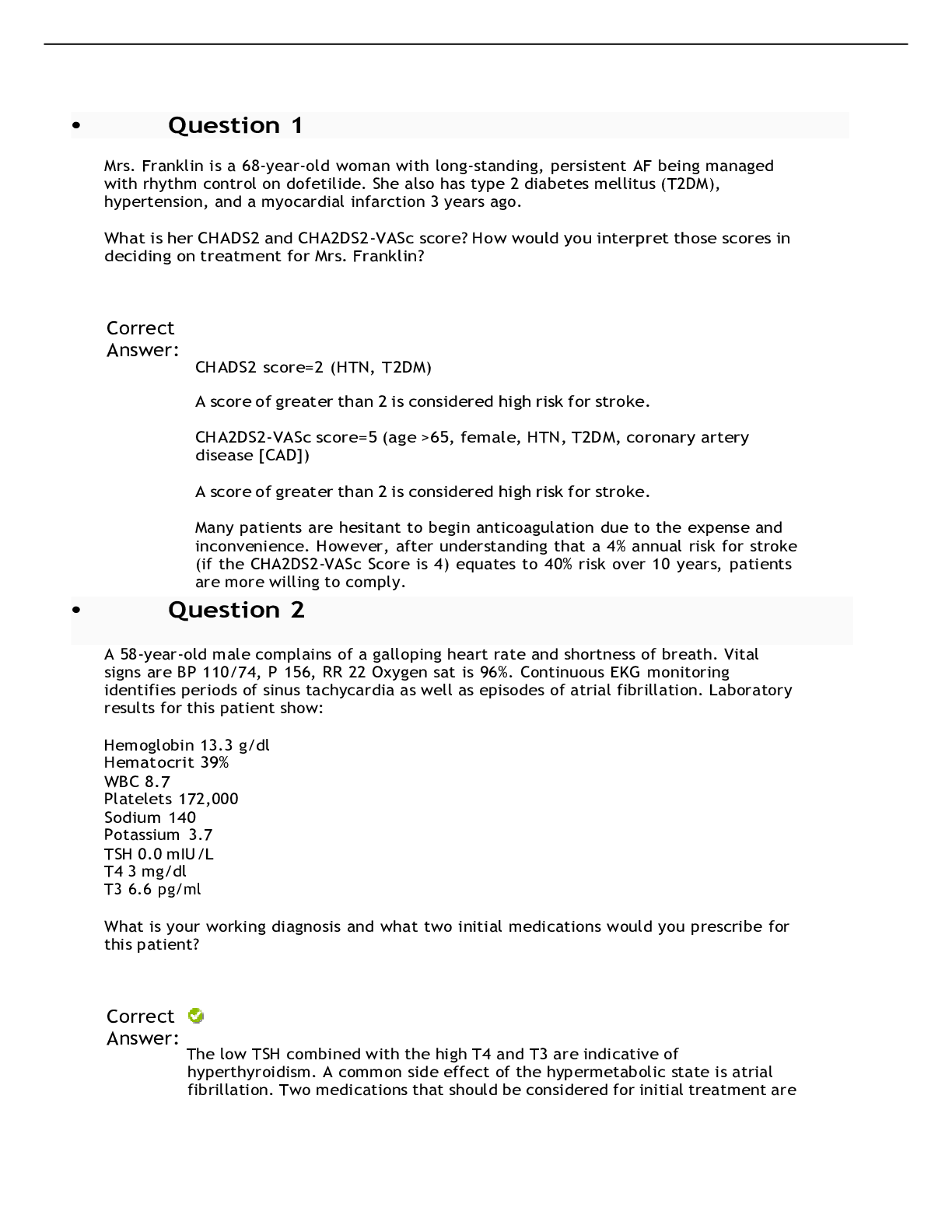

.png)
.png)
.png)
.png)
.png)
.png)
.png)
.png)
.png)
.png)
.png)

.png)

.png)
.png)
